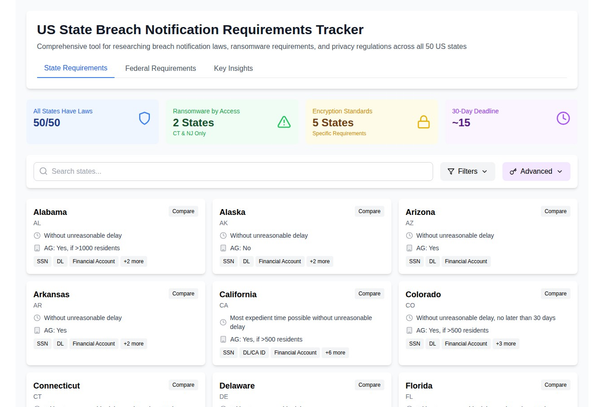Safeguarding the Financial Sector: Understanding Breaches and Strengthening Cybersecurity

Introduction: In an era of digital transformation, the financial sector faces ever-increasing cybersecurity threats. Cybercriminals target financial institutions to gain unauthorized access to sensitive customer data, disrupt operations, and commit financial fraud. This article provides a comprehensive overview of breaches in the financial sector, their impact, and actionable strategies to strengthen cybersecurity defenses.
I. Understanding Breaches in the Financial Sector:
- Types of Breaches: Explore the different types of breaches encountered in the financial sector, including data breaches, phishing attacks, ransomware incidents, insider threats, and ATM skimming.
- Common Data Exposed: Discuss the types of sensitive information at risk, such as customer personally identifiable information (PII), financial account details, Social Security numbers, and credit card information.
- Consequences of Breaches: Highlight the potential repercussions of successful breaches, including financial losses, reputational damage, regulatory penalties, customer attrition, and legal consequences.
II. Key Threats and Attack Vectors:
- Advanced Persistent Threats (APTs): Explain how APTs, often state-sponsored, target financial institutions for espionage, intellectual property theft, and financial gain.
- Social Engineering Attacks: Discuss the various social engineering techniques used by cybercriminals, including phishing, spear-phishing, and Business Email Compromise (BEC), to deceive employees and gain unauthorized access.
- Malware and Ransomware: Highlight the risks posed by malware and ransomware, such as remote access Trojans (RATs) and crypto-locking malware, and their potential to disrupt operations and extort funds.
- Insider Threats: Address the challenges posed by insider threats, including malicious employees, compromised credentials, and inadvertent data leaks.
III. Strengthening Cybersecurity Defenses:
- Regulatory Compliance: Discuss the importance of adhering to industry-specific regulations, such as the Gramm-Leach-Bliley Act (GLBA) in the United States, Payment Card Industry Data Security Standard (PCI DSS), and General Data Protection Regulation (GDPR) in the European Union.
- Multi-Layered Defense Strategy: a. Network Security: Emphasize the need for robust firewalls, intrusion detection and prevention systems (IDPS), and secure network segmentation to protect against external threats. b. Endpoint Protection: Advocate for comprehensive endpoint security solutions, including anti-malware software, patch management, and device encryption, to safeguard against malware and unauthorized access. c. Employee Awareness and Training: Highlight the significance of cybersecurity education and regular training programs to educate employees about social engineering risks, phishing techniques, and best practices for data protection. d. Strong Access Controls: Encourage the implementation of strong authentication mechanisms, including multi-factor authentication (MFA) and privileged access management (PAM), to limit unauthorized access to critical systems and data. e. Incident Response Planning: Stress the importance of developing an effective incident response plan, including proactive threat hunting, timely detection, containment, and recovery measures, to minimize the impact of breaches.
IV. Collaboration and Information Sharing:
- Public-Private Partnerships: Highlight the significance of collaboration between financial institutions, industry associations, and law enforcement agencies to share threat intelligence and best practices.
- Information Security Audits and Assessments: Advocate for periodic security audits and assessments to identify vulnerabilities, ensure regulatory compliance, and improve security posture.
Conclusion: As cyber threats continue to evolve, financial institutions must prioritize cybersecurity to protect customer data, maintain trust, and ensure business continuity. By implementing multi-layered defense strategies, adhering to regulatory frameworks, fostering a culture of security awareness, and embracing collaborative approaches, the financial sector can enhance its resilience against breaches and safeguard its critical infrastructure. Continuous vigilance and adaptation to emerging threats are key to mitigating risks and ensuring a secure digital ecosystem for financial transactions.
Disclaimer: This article provides general information and guidance about breaches in the financial sector and strengthening cybersecurity. It is not legal or professional advice. Financial institutions should consult with cybersecurity professionals and adhere to specific regulatory requirements to ensure the protection of their systems and customer data.
5 notable financial sector breaches
Equifax Data Breach (2017):
- Information: Equifax, one of the largest credit reporting agencies in the United States, suffered a massive data breach.
- Damages: The breach exposed sensitive personal information of approximately 147 million individuals, including names, Social Security numbers, birthdates, and credit card details.
- Key Details: The breach was attributed to a vulnerability in a web application, which allowed hackers to gain unauthorized access to Equifax's systems. The incident resulted in regulatory fines, lawsuits, and reputational damage for the company.
JPMorgan Chase Data Breach (2014):
- Information: JPMorgan Chase, one of the largest banks in the United States, experienced a significant data breach.
- Damages: The breach affected approximately 76 million households and 7 million small businesses, compromising customer contact information, such as names, addresses, phone numbers, and email addresses.
- Key Details: The attack was attributed to a group of hackers, including individuals from Russia. Although sensitive financial data was not compromised, the incident highlighted the vulnerability of financial institutions to cyber threats.
Bangladesh Bank Heist (2016):
- Information: The Bangladesh Bank was targeted in a sophisticated cyber heist.
- Damages: The attackers attempted to steal nearly $1 billion from the bank's account at the Federal Reserve Bank of New York. Although most attempts were unsuccessful, $81 million was transferred to fraudulent accounts.
- Key Details: The attack involved malware that manipulated the bank's SWIFT messaging system, allowing the attackers to initiate fraudulent transactions. The incident was attributed to North Korean threat actors.
Capital One Data Breach (2019):
- Information: Capital One, a major financial institution in the United States, experienced a data breach.
- Damages: The breach affected approximately 100 million individuals, exposing personal information such as names, addresses, credit scores, and Social Security numbers.
- Key Details: The attacker exploited a vulnerability in Capital One's infrastructure to gain unauthorized access and exfiltrate sensitive data. The incident resulted in regulatory penalties and the implementation of enhanced security measures by the bank.
SWIFT Banking System Attacks (Multiple Incidents):
- Information: Several financial institutions worldwide have experienced cyberattacks targeting the SWIFT messaging system used for international financial transactions.
- Damages: The attacks have resulted in significant financial losses, with funds being fraudulently transferred or attempted to be transferred to attacker-controlled accounts.
- Key Details: Various incidents involving SWIFT attacks have been attributed to different threat actors, including the Lazarus Group, which has been linked to North Korea. These attacks have highlighted the need for improved security measures and increased awareness of potential vulnerabilities in the global banking system.
It's important to note that responses and actions taken to address these breaches vary based on the incident and the organizations involved. Common responses include incident response investigations, cooperation with law enforcement, implementing stronger security measures, and enhancing customer protection and communication. For the most up-to-date and detailed information on these incidents, it is advisable to consult reliable sources and official statements from the organizations affected.





